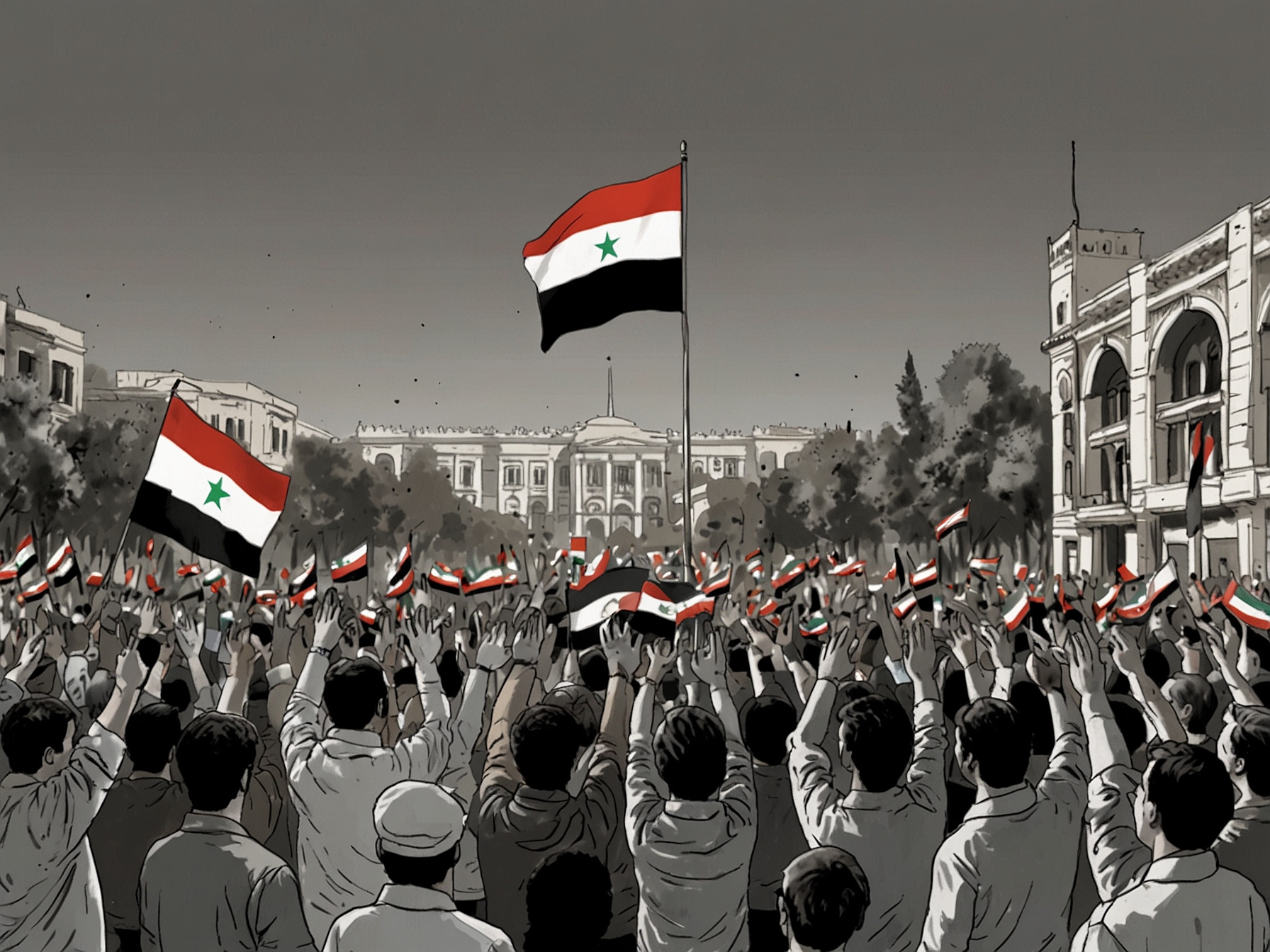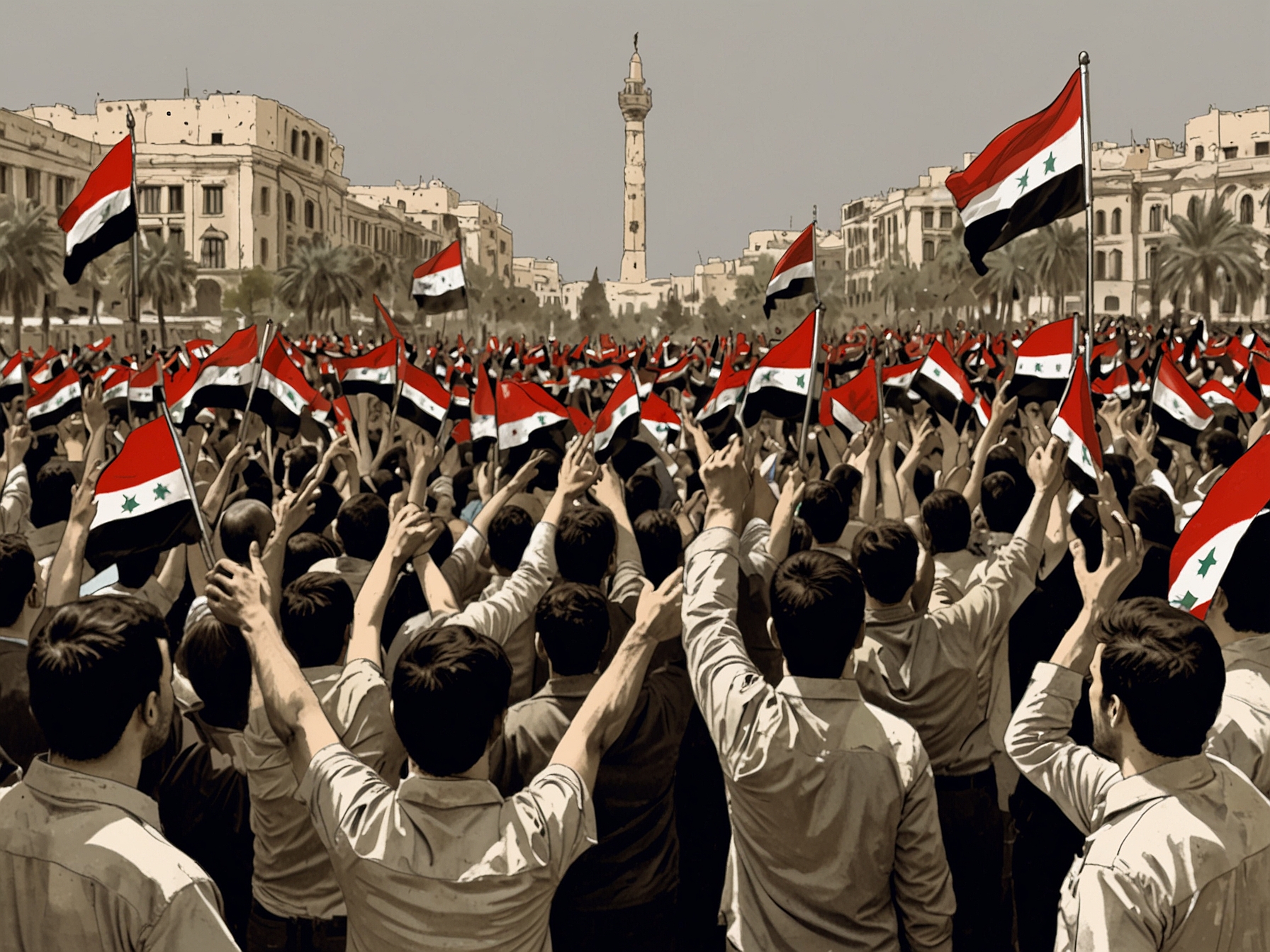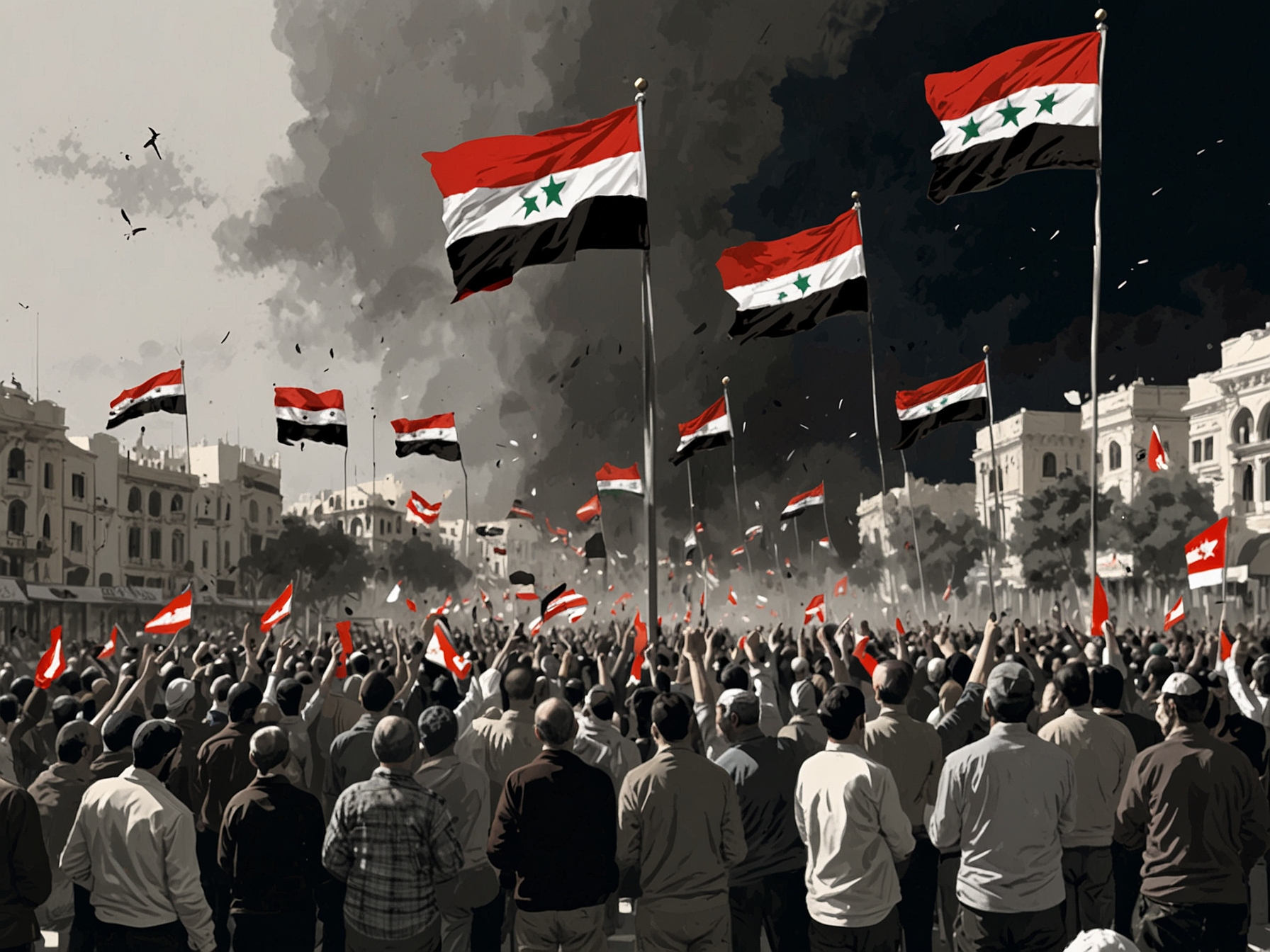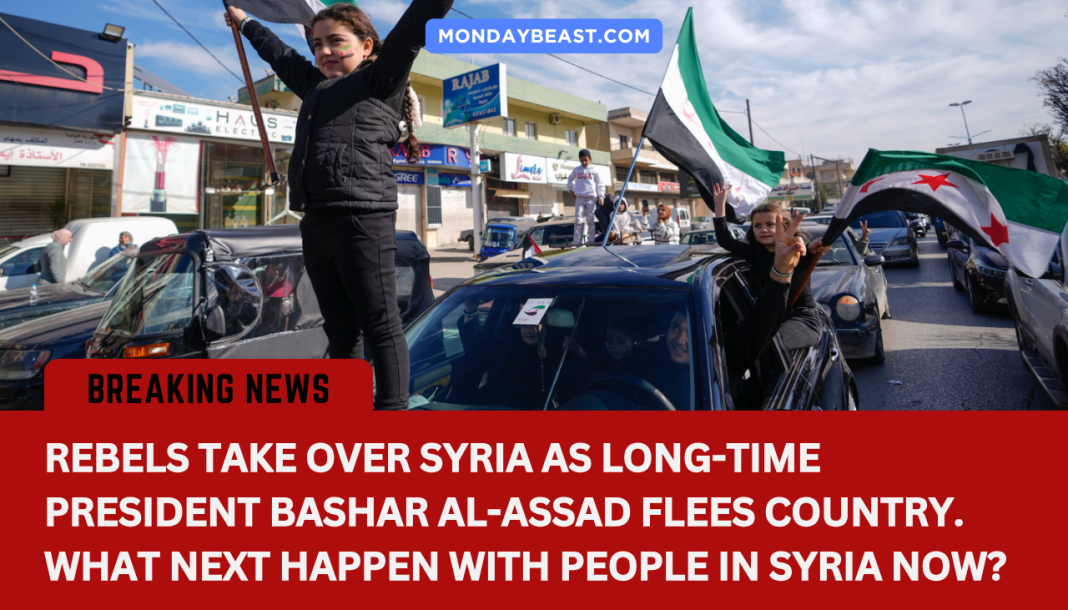The Unexpected Fall of Assad
On December 8, 2024, history changed in Syria. President Bashar al-Assad fled, ending a long reign. It was a moment many thought wouldn’t come. Crowds swelled into the streets, their joy electric. Streets that were once silent now roared with celebration.
In Umayyad Square, the heart of Damascus, the atmosphere crackled with excitement. People waved flags, chanting slogans. They celebrated not just the fall of a man but an entire regime. The images of Assad’s effigies burned on the ground painted a vivid picture of liberation.

This moment marks the end of over fifty years of Baath rule in Syria. The rebels, led by Hayat Tahrir al-Sham, executed a surprisingly swift offensive. In less than two weeks, they captured key cities, including the capital itself.
The Moment of Capture
Witnesses recall the rapid advance of rebel forces. It felt surreal as the news broke. Many had waited a long time for this moment. The feeling was akin to standing at the edge of a cliff, ready to leap into the unknown.
On the evening of December 7, reports streamed in. Rebel fighters stormed the capital. Flames engulfed the Ministry of Interior. The last echoes of control dissipated. Was this really happening, many asked themselves. The atmosphere was charged with both fear and hope.

In Homs, the scene was no different. People rejoiced as they gathered in the main square. News traveled fast. Families embraced one another, tears of joy mixed with disbelief. Some had lost loved ones in the long years of conflict.
Echoes Across the Nation
How does one celebrate a moment filled with such weight? People in Qamishli began tearing down statues of Assad’s brother, Basel. Each swing of the hammer felt like a release. It was cathartic yet deeply emotional.
Celebrations erupted not just in cities but in hearts. The end of Assad’s authoritarian grip opened pathways. Dreams that seemed unreachable suddenly felt possible. Could this be a turning point for a war-torn nation seeking identity?

In Aleppo, laughter blended with tears. Families who had fled the fighting returned. They began to dare to hope once again. Yet amidst this joy, a sense of caution emerged. What would the future hold for Syria?
Reflections on Freedom
As news spread internationally, reactions varied. For many, the fall of Assad heralded hope, while others expressed concern. The power vacuum raised questions—who would lead? Countries kept a watchful eye. What were the implications for regional stability?
In the aftermath, the path forward seemed unclear. Rebels and former regime supporters would need to coexist. What would reconciliation look like? Everyone felt a mix of optimism and uncertainty.
Many pondered questions like these. Could the Syrian people forge a new national identity? Everyone hoped for a brighter future. Yet, deep-seated wounds would take time to heal.
The Final Farewell
As Assad fled, moments of chaos reigned. Images flooded social media as people streamed into his once-mighty residence. Ransacking turned into an act of defiance. Would this really signal a new beginning?
Rebel fighters remained vigilant, aware that challenges lay ahead. An era ended, but the transition to something better isn’t quick. The stories of hardship forged a narrative of resilience.
In the midst of this tumult, everyday civilians emerged as heroes. They built a dream for a peaceful Syria. Many now hope to write a future free from tyranny. The fight lasted years, but could their story change?
Looking Ahead
As the dust settles, what’s next for Syria? The world watches closely. Many in the country share a sense of relief. Others remain cautious, wary of what’s to come. Healing a nation takes time.
People prepare for potential volatility. Still, there is a glimmer of hope. Will they finally have the freedom they’ve longed for? Only time will tell.
December 8 marked a significant turning point. For Syria, it isn’t merely a change of leadership; it’s a chance for rebirth. The dreams of the past can guide the future, but the journey is just beginning.




